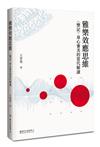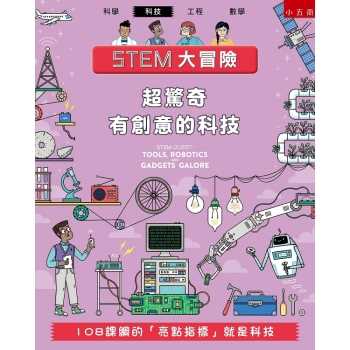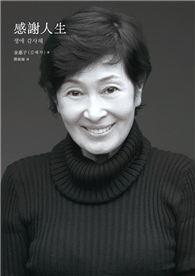第一章 導論:漢音樂傳統的身心審美與價值觀(摘錄)
身心審美觀其實有許多迫切的問題等待釐清:首先,並非每個傳統樂人都同意或經驗過這種身心康泰的效果。若同樣的音樂對某些樂人具有身心正面效果,對某些樂人則否,那麼如何能將審美價值建立於一個尚未確知其「功效」的說法?是否這僅是個別樂人對其音樂的主觀評價,或因喜愛而賦予其特殊的身心意義?這些問題可以歸結到一組更根本的問題:究竟古書所言理想音樂(雅樂)的正面身心功效是否存在?其基礎又是什麼?
本書的焦點問題便在此─〈樂記〉所言之雅樂身心效果在今日學科研究視野下的意義及其思想基礎。對傳統音樂審美觀而言,身心功效是至為關鍵,但又難以回答的問題;若未獲解決,將使身心審美停佇於文化涵融而來的感覺、想像或信念,而不見得具有身心實際上的意義。也就是說,傳統的音樂身心「功效」說對身心審美而言,是一個至為迫切的問題。
漢傳統有關理想音樂帶來身心康泰安和之說,不僅涉及音樂審美、古代思想,也涉及對「效果」的驗證與觀察。而後者有待足夠實證科學與經驗科學之檢驗,以及跨領域的相互對話、溝通,方得行之。若缺乏實證科學及經驗學科而來的理解,則涉及養生、長壽、疾病療癒等「功效說」的音樂審美觀,將難以對講求科學實證的現代人產生強大的說服力。也就是說,對身心審美的探究需能掌握不同學科領域之研究發現,且能疏通各學科的語彙、方法與思想。
這對研究而言是極為巨大的挑戰:由於不同學門具有各自領域的視角、語彙及研究方法,單一的研究同時要理解並整合不同領域的探討,實已是非常艱鉅的任務;何況〈樂記〉內容以及「身心康泰」的審美說法涉及的領域跨度極大,不僅跨越不同的人文藝術學門(如國學、音樂學、哲學),也涉及社會科學(如政治、心理學、社會學),甚至自然科學,包括腦科學、醫學等等。或許這些困難也是何以迄今尚未出現對傳統身心審美觀的系統性深入探討的一大主因。
由於一些機緣,筆者於2012年起,得以與心理學家及腦造影專家共組跨領域團隊,對雅樂身心效果進行初步的實證及經驗研究。該研究的發現說明於本書第二章第一部分。這些初步發現帶來更多的疑惑,引起筆者進一步探索相關問題,包括〈樂記〉對於音樂身心影響力的看法及解釋、相關學科對於「音樂如何影響身心」的發現、〈樂記〉說法在今日實證發現下的意義,以及其預設之立場與思維方式等等。本書第三章起便逐一討論對這些問題的探索。有趣的是,一旦此對話開啟,竟發現〈樂記〉對音樂身心效果的說法,竟能為實證科學及西方音樂學的新近發展,帶來具有時代意義的參照。這方面的說明見於本書第三章及第七章。
本書採用的研究方法,主要是分析法,包括古籍思想分析、樂音聲響分析,以及跨領域的整合性分析。後一項其實為一艱鉅的工程,牽涉到不同學科各自的要求、不同的目標、觀念、方法,甚至語彙。在一本有關音樂審美的著述中涵蓋此項工作,實為極大野心;稍一不慎便易使討論繁雜而失焦。不過,若要呈現身心審美在科學發達的今日之時代意義,那麼相關的實證科學與經驗學科之發現便不容忽略,也不能不處理〈樂記〉主張與這些相關學科發現之間的關係。有鑑於此,本書對於相關學科(如心理學、音樂人類學、哲學等等)之討論皆鎖定於特定「議題」,並以之與〈樂記〉之對應主張交叉對話,以便釐清後者在今日的意義。例如第三章係針對「音樂如何影響身心」在相關領域中的發現,這些發現用來與〈樂記〉藉由禮樂並進而達其身心意義的作法互相映照闡發;第七章針對古書「心物相通」之預設立場,討論今日相關學科中對「心物關係」的理解情形。期許藉由以「議題」為焦點的分析檢視,開啟跨學科之對話,以便深入明白〈樂記〉身心審美在今日的意義。
接下來的內容係以〈樂記〉為核心而展開,焦點議題為身心審美觀。繼第一章介紹了漢音樂傳統的身心審美觀之後,第二章首先針對〈樂記〉中身心審美的關鍵表述─即有關雅樂使人「耳目聰明,血氣和平」之說─由音樂與靜坐修練的角度提出分析,指出〈樂記〉所推崇音樂在人身心上的功效之可能性。第三章再進一步針對此身心審美觀的操作方式,析論〈樂記〉「禮樂並進」之作法,及其與今日相關學科發現的關聯。由於〈樂記〉對於身心審美所呈現的思維及論述方式,大不同於今日研究常見的邏輯推理,因此於第四、五、六章再進一步深入分析〈樂記〉透露的思維方式。第四章由〈樂記〉所呈現的思想觀念,分析其中的「聯類協調思維」。第五章由〈樂記〉主張的實際作法─禮樂操作─分析其中隱含的聯類協調思維。第六章則由〈樂記〉所陳述的聆聽感知方式,分析其中隱含的聯類協調思維。第七章之結語中,一方面陳述雅樂身心意義在今日的實踐情形,另一方面則闡述〈樂記〉心物感通的思維基礎在今日的意義。
在進入正題之前,不妨先對「雅樂」概念稍做梳理。本書以「雅樂」一詞指稱〈樂記〉所肯定讚許的音樂。其實在該典籍中並未出現「雅樂」一詞。書中僅見「雅」與「樂」二字分開出現,如:故人不耐無樂,樂不耐無形。形而不為道不耐無亂。先王恥其亂,故制雅頌之聲以道之。(〈樂記〉,頁700)
在內容與〈樂記〉大致相同的《荀子.樂論》中,也出現此段話,同樣是將「雅」與「樂」分開使用。在這些敘述中可見「雅頌之聲」是〈樂記〉與〈樂論〉所稱許肯定的音樂之通稱;有時亦以「樂」或「大樂」稱之。至於「雅樂」此二字的共同出現可見於《論語》:「惡紫之奪朱也,惡鄭聲之亂雅樂也」(《論語.陽貨》)。
由於〈樂記〉對其所稱許的音樂有時稱「樂」有時稱「大樂」有時又稱「雅頌之聲」,無單一特定的詞彙表述。本書為便於論述,以「雅樂」一詞統稱。這也是依循音樂界中已有的作法。書名標題中的「雅樂效應」一詞係指〈樂記〉所述的雅樂身心效益,包括「耳目聰明、血氣和平」、「英華發外」、「氣盛化神」等等(詳第二章)。
依據《中國音樂辭典》,「雅樂」一般泛指「宮廷的祭祀活動和朝會儀禮中所用的音樂」,原為周代禮樂制度中,用於祭祀天地(郊社)、祭祀祖先(宗廟)、宮廷的各種儀式宴會(如朝會、燕饗、射鄉),以及軍事大典等等場合中。(中國藝術研究院音樂研究所編1984, 444-45)這些音樂原先並無統一的名稱,是後來春秋戰國時期為與「鄭衛之音」或俗樂有所區別而被冠以「雅樂」之稱。史學研究指出,「雅樂」在不同時代帶有的意義各有不同;在本書中則如前述,用以代表〈樂記〉所稱許的音樂。
不過本書所關注的並不是雅樂在先秦兩漢時期的變化歷程、有哪些樂曲、其音階結構如何,或流傳於何處;採用的研究方法也並非考古、史學或訓詁方法探究「雅樂」。如前述,本研究之目的是欲為〈樂記〉的身心審美進行思想分析,並檢視該思想與當代學科研究發現之間的關係。下一章便進入本書的核心,即〈樂記〉的身心審美,並以當代的相關實證研究與音樂分析、〈樂記〉的內容分析,此三方面進行交相闡發。
| FindBook |
有 9 項符合
雅樂效應思維:〈樂記〉身心審美的當代解讀的圖書 |
| 最新圖書評論 - | 目前有 2 則評論,查看更多評論 |
|
 |
雅樂效應思維:〈樂記〉身心審美的當代解讀 作者:王育雯 出版社:國立臺灣大學出版中心 出版日期:2019-05-30 語言:繁體書 |
| 圖書選購 |
| 圖書館借閱 |
| 國家圖書館 | 全國圖書書目資訊網 | 國立公共資訊圖書館 | 電子書服務平台 | MetaCat 跨館整合查詢 |
| 臺北市立圖書館 | 新北市立圖書館 | 基隆市公共圖書館 | 桃園市立圖書館 | 新竹縣公共圖書館 |
| 苗栗縣立圖書館 | 臺中市立圖書館 | 彰化縣公共圖書館 | 南投縣文化局 | 雲林縣公共圖書館 |
| 嘉義縣圖書館 | 臺南市立圖書館 | 高雄市立圖書館 | 屏東縣公共圖書館 | 宜蘭縣公共圖書館 |
| 花蓮縣文化局 | 臺東縣文化處 |
|
|
圖書介紹 - 資料來源:TAAZE 讀冊生活
圖書名稱:雅樂效應思維:〈樂記〉身心審美的當代解讀
是故情深而文明,氣盛而化神。和順積中而英華發外。唯樂不可以為偽。──〈樂記〉
漢傳統音樂的審美常因其對身心的安頓提昇而受讚賞,包括「耳目聰明」、「氣盛化神」、「英華發外」等等。本書探究雅樂身心效益之說在今日學科視野下的意義,採用跨學科的對話方式,不僅由古書的文字,也由音樂心理學、音樂治療、腦造影、樂音聲波頻譜分析、起乩轉識調查等等今日學科研究之發現,與古書的文字來回映照。書中指出〈樂記〉的說法一方面呼應今日不同學科對於「音樂如何影響身心」的理解,一方面還點出該影響之運作原則;甚至更進一步提出具體的操作方式,以及相應的思維感知系統;為今日對音樂身心影響的理解瓶頸,開啟一扇突破的窗口,也為傳統身心審美展開一套理路系統。
作者簡介:
王育雯
美國哥倫比亞大學音樂理論博士,現任臺灣大學音樂學研究所副教授;長年致力於音樂與身心靈關聯之探討。早年研究的是西方藝術音樂及其美學;此後醉心於古代典籍的智慧,特別是其中有關人心運作,以及音樂如何對身心產生正面影響的看法。多年來持續禪修靜坐,並由其中獲益極大;通過自身內在經驗以及相關文獻探討,體會古人智慧與今日科學的相通之處,從而投入本書之研究。著作包括古琴的身心意義、漢傳統音樂的審美觀、樂曲及錄音分析,以及有關音樂時間性的析論。
章節試閱
第一章 導論:漢音樂傳統的身心審美與價值觀(摘錄)
身心審美觀其實有許多迫切的問題等待釐清:首先,並非每個傳統樂人都同意或經驗過這種身心康泰的效果。若同樣的音樂對某些樂人具有身心正面效果,對某些樂人則否,那麼如何能將審美價值建立於一個尚未確知其「功效」的說法?是否這僅是個別樂人對其音樂的主觀評價,或因喜愛而賦予其特殊的身心意義?這些問題可以歸結到一組更根本的問題:究竟古書所言理想音樂(雅樂)的正面身心功效是否存在?其基礎又是什麼?
本書的焦點問題便在此─〈樂記〉所言之雅樂身心效果在今日學科研究視...
身心審美觀其實有許多迫切的問題等待釐清:首先,並非每個傳統樂人都同意或經驗過這種身心康泰的效果。若同樣的音樂對某些樂人具有身心正面效果,對某些樂人則否,那麼如何能將審美價值建立於一個尚未確知其「功效」的說法?是否這僅是個別樂人對其音樂的主觀評價,或因喜愛而賦予其特殊的身心意義?這些問題可以歸結到一組更根本的問題:究竟古書所言理想音樂(雅樂)的正面身心功效是否存在?其基礎又是什麼?
本書的焦點問題便在此─〈樂記〉所言之雅樂身心效果在今日學科研究視...
顯示全部內容
目錄
前言
第一章 導論:漢音樂傳統的身心審美與價值觀
第一節 傳統音樂實踐的身心審美經驗
第二節 典籍中的身心審美
第三節 本書目的、相關研究
第二章 「耳目聰明,血氣和平」:樂音、內觀靜坐,與〈樂記〉的雅樂效應說
第一節 經驗調查與實驗發現
第二節 由靜坐修練的觀點分析《壽齊天》樂音結構
第三節 〈樂記〉的說法
第三章 音樂如何影響身心:〈樂記〉的禮樂操作與今日相關學科發現
第一節 相關學科中的經驗調查與實證發現
第二節 禮樂實踐中的「多方因素匯聚」
第四章 雅樂效應說的基礎:聯類協調
第...
第一章 導論:漢音樂傳統的身心審美與價值觀
第一節 傳統音樂實踐的身心審美經驗
第二節 典籍中的身心審美
第三節 本書目的、相關研究
第二章 「耳目聰明,血氣和平」:樂音、內觀靜坐,與〈樂記〉的雅樂效應說
第一節 經驗調查與實驗發現
第二節 由靜坐修練的觀點分析《壽齊天》樂音結構
第三節 〈樂記〉的說法
第三章 音樂如何影響身心:〈樂記〉的禮樂操作與今日相關學科發現
第一節 相關學科中的經驗調查與實證發現
第二節 禮樂實踐中的「多方因素匯聚」
第四章 雅樂效應說的基礎:聯類協調
第...
顯示全部內容
圖書評論 - 評分:
| |||
|
|

 2020/03/07
2020/03/07










